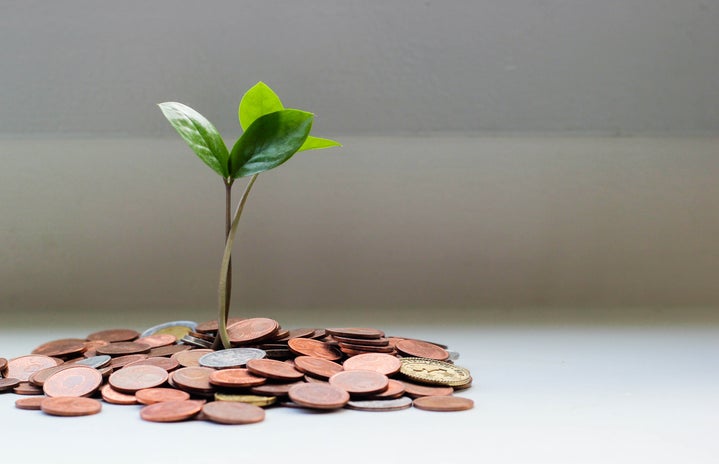You’re in line at a coffee shop, and right as you turn around, latte in hand, you see a trash can in the corner. It’s overflowing from disposable water bottles and coffee cups, and you know that when you’re done with your drink, your cup will end up in the same bin. It seems kind of sad, I’m sure, that our need for water and our desire for coffee and other beverages leaves so much waste in its wake. Although you probably rarely think about it in your everyday life, it’s pretty hard to ignore when you’re faced with this scene. It might be unreasonable to ask someone to stop consuming these products, but it’s important to understand where this waste ends up so that we can make more responsible decisions.
Plastic is not a naturally occurring resource, which means that it will never naturally decompose back into the Earth. So if it is thrown away, it either goes into a landfill and remains there forever, or it is burned with other waste products. When this plastic is burned, however, it emits toxic chemicals. This contributes to pollution and not only impacts the health of the global environment but all of our personal health. Now, a lot of plastic is recycled, and I in no way mean to downplay the role of recycling as a sustainable practice, but the fact is that in terms of plastic, its effects aren’t that meaningful. Most products made of recycled plastic can only be made with a relatively small percentage of truly recycled plastic, because of health concerns regarding chemicals emitted while burning and reshaping said plastic. Because of this, most recycled plastic goes into making plastic bags and even these bags aren’t made of 100% recycled materials.
We all know that paper originally comes from forests, which are being harvested at alarming and dangerous rates. The overharvesting of forests leads to the destruction of habitats for any species that reside in these places. A frequently mentioned hotspot of forest desolation is the Amazonian rainforest, but really it happens everywhere. I worked at a sleep-away camp over the summer, and the camp’s property was adjacent to the property of a paper company. I can personally attest to the sadness of walking around a curve in the path and seeing a huge plot of trees cut to the ground. And while paper is more easily recycled than plastic, if the consumer never recycles it, it will likely end up in a landfill. Also, a lot of paper products with waxy or shiny coats on them (think the inside of a coffee cup) cannot be recycled well because of the synthetic coating.
Photo Credit: http://www.fpb.gov.bc.ca/uploadedImages/Community_Outreach/b-clearcut.jpg
So one of the easiest, least expensive steps toward sustainability is to invest in a reusable water bottle or coffee cup. If you use them regularly, it cuts so much waste out of your everyday life, which can really make a difference for the environment when more and more people make the more sustainable choice. And if you aren’t going to do it for the future of the planet, think about doing it for your wallet!
First off, water should be free. But if you’re buying disposable bottles every day it’s not. It’s actually really expensive. Let’s say that from an average vending machine you could buy a bottle of water for one dollar. This school year, there are 159 days of class. If you bought a bottle of water every day of class, you’re spending 159 dollars that you could be spending on better things. And that’s not even including weekends. Even if you only bought one bottle a week, that’s still a whopping 33 dollars. I spent $16.99 on my water bottle; that’s still almost twenty dollars that you didn’t have before. In addition, a lot of coffee shops offer discounts if you bring in a reusable coffee cup. Again, this may only be 10-20 cents per cup, but it adds up (and I guarantee that the benefit to the Earth is far more valuable than a fraction of a dollar). And bonus: if you invest in a reusable glass water bottle (which is actually more sustainable than plastic in the first place) with rubber insulating (as shown below), you wouldn’t even need the coffee cup – these water bottles are built to handle a range of temperatures.
Photo Credit: http://www.ecostoredirect.co.nz/media//takeya_classic_range_cropped.jpg
Before I tragically lost it, the bottle on the far right was my absolute favorite water bottle.
So next time you’re in line at the coffee shop and see those sad little paper cups and you think, “wow I really wish there was some way that I could better the world,” I think a good place to start is a reusable coffee cup or water bottle. Both your wallet and the planet will feel better for it, and how could that not put a smile on your face?


